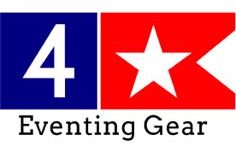Be Prepared For an Equine Emergency Evacuation
As another series of fires hit Southern California, horse owners are either scrambling to figure out a plan or executing their existing equine emergency evacuation plan. The fires have luckily not changed the daily schedule of our horses or our business but that can’t be said for some of our friends. As we watch the fires fluctuate between containment and expansion there has been a lot of good information being passed around about preparing for an equine emergency evacuation. We would like to share some of that information with you while we wait for another opportunity to help our neighbors down here in San Diego.
Quick Resources:
- Register your Cell Phone for Reverse 911: San Diego (consider setting your address to your barn’s address if you don’t have your horse at home)
- Current SoCal fire status via Google Map Engine
- Southern California Equine Emergency Evacuation FB Page
Southern California Equine Emergency Evacuation Preparation & Execution
This Facebook Group has put out a good document on how to prepare for an equine emergency evacuation. It’s been altered slightly from it’s original publication format.
Preparation:
Pre-training of your horse:
- multi-trailer loading and unloading (load horse in several different trailers)
- multi-handler (horse should load / unload for different people)
- horse should be trained to stay calm around chaos
- handler / owner should be able to operated under pressure and chaos while staying calm
Documenting your horse:
- laminating sign with horse picture, owners name, emergency contact name, Vet’s name & any special needs. This is to be used at a possible evacuation site. Hole punch it and attach some twine.
- ID Band for horse: Fetlock band with owner’s contact information / similar information as above.
- ID Band for horse’s halter: ID band for the halter with similar information as above. This information should be easily accessible – unlike the fetlock band which has it’s limits to accessibility.
- Ownership book / FEI passport: Vet records, registration, picture of horse, special needs, owner’s & emergency contact information
Logistics:
- Have a pre-set agreement with at least 2 people who can evacuate for you should you not be available
- Pre-route two emergency routes & meeting places
- Be sure your trailer is always safety checked & ready to go
- If you don’t have a trailer, have at least 2 other ways to transport your horse (be sure your horse(s) have a reserved spot on a trailer ride out of danger!)
- Have a “we’re leaving” point defined before you’re officially evacuated (this is based on experience)
Communication:
- Register cell phone for Reverse 911 – set your address to your own property only if that’s where your horse lives – consider setting the address to your boarding facility
- Know who to call if you need help evacuating your horse (yes, this is repetitive from logistics section… it’s important)
- Know who your local officials are – local fire, forest service etc.
Emergency Bag in Trailer / Readily Available:
- Bandanas
- Halter & lead
- Water
- Banamine
- Electrolytes
- Camera
- Small dose of any required meds (keep them current)
Execution:
1) Have everything you need in a central location or in a single bag the minute you know there is a fire that COULD reach your area.
- Extra keys
- Horse ownership book (defined above)
- Cell phone / charger
- Know / review your evacuation plan as defined above to make sure it still makes sense considering your current situation
2) Put your ID bands on your horses BEFORE the fire gets to your area / you begin moving
3) Contact your emergency back up person(s) and be ready to activate once you know of a fire – BEFORE it reaches your area.
- Secure your spot on a trailer ride out of danger
- Get food / water ready to load onto trailer
4) Prepare your own trailer
- Load 3 days worth of water & food
5) Keep up on news / evacuation orders for your area
6) Be ready to move!
